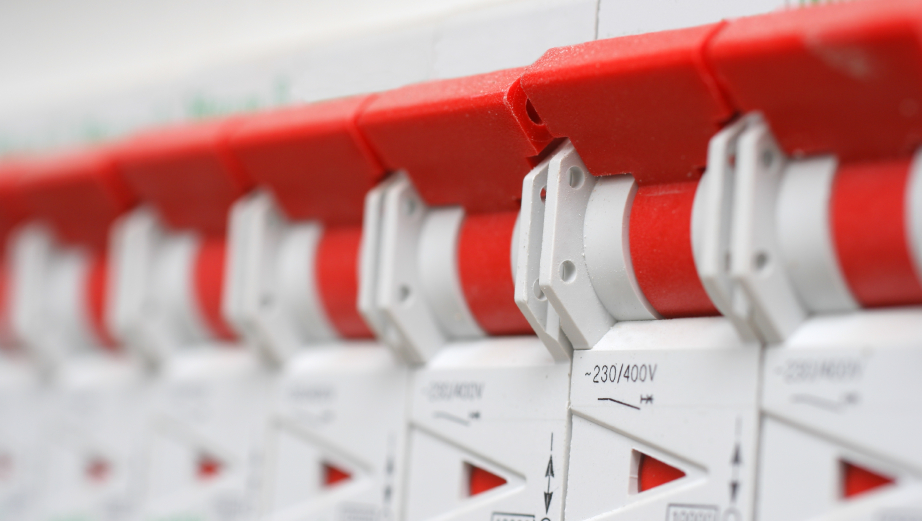How to Choose the Right Circuit Breaker
 Circuit breakers are a very important part of electrical safety. They control the amount of electricity that flows through a building's electrical wiring system. If your home suffers an electric overload or a short circuit, a properly functioning circuit breaker will detect the issue and cut off the electrical supply. This will protect your wiring and appliances until you take care of the problem and restart the electricity. However, in order for a circuit breaker to do its job properly, you have to match the right circuit breaker with your exact needs. Read the following simple explanations and you’ll be ready to choose the appropriate circuit breaker for your home.
Circuit breakers are a very important part of electrical safety. They control the amount of electricity that flows through a building's electrical wiring system. If your home suffers an electric overload or a short circuit, a properly functioning circuit breaker will detect the issue and cut off the electrical supply. This will protect your wiring and appliances until you take care of the problem and restart the electricity. However, in order for a circuit breaker to do its job properly, you have to match the right circuit breaker with your exact needs. Read the following simple explanations and you’ll be ready to choose the appropriate circuit breaker for your home.
3 Capacities of Circuit Breakers
Circuit breakers are available in 3 different voltage capacities. Each is made to accommodate a specific amount of electricity.
- Low-voltage thermal magnetic circuit breakers are best suited for most single-family homes. They allow for electrical currents that measure only up to 1000 amps.
- Medium voltage circuit breakers are used in larger buildings, such as apartment complexes and businesses, that use up to 72,000 volts on a regular basis.
- High-voltage circuit breakers are used alongside power lines and in other places that use more than 72,000 volts regularly.
How Does a Circuit Breaker Work?
Low-voltage circuit breakers have 2 safety mechanisms in place to keep your appliances from getting fried by electric overloads:
- The first is an electromagnet that immediately shuts off the electrical current when it senses a large electric surge.
- The second safety mechanism is operated by a thermal metallic strip that bends and trips a switch into the "Off" position when too much heat is applied by a prolonged electrical surge.
Types of Circuit Breakers
Within the category of low-voltage circuit breakers for home use, you’ll also find different 3 types.
- Standard circuit breakers are the commonest type, used for most electrical outlets in the home, especially for those serving large appliances. They may be single- or double-pole.
- GFCI circuit breakers will cut power to the circuit not only in the case of a overload or short circuit, but also when they detect a line-to-ground fault. They are required in parts of the home where electrical outlets are located close to water sources, such as outdoors and in the kitchen and bathroom.
- AFCI circuit breakers interrupt the power supply when they sense an electrical surge or abnormal path that could cause an electric fire. These are required by code in all new home construction, replacing standard circuit breakers.
Figure Out the Breaker Size You Need
In order to choose the best-size circuit breaker for your particular household needs, check the wire size printed on the cable that is to be connected to the circuit breaker. You will see 2 measurements listed: The first will tell you the wire gauge, followed by a dash and a second number which indicates how many wires are inside the cable. Once you have established the wire gauge, use the following chart to pick the correct circuit breaker:
- 8-gauge wire = 40-amp circuit breaker
- 10-gauge wire = 30-amp circuit breaker
- 12-gauge wire = 20-amp circuit breaker
- 14-gauge wire = 15-amp circuit breaker
Electrical work must always be done with safety as the top priority. If you have any questions or confusion about choosing the right circuit breaker for your project, talk to an expert at your local hardware store or call an experienced electrician to get some sound advice. Good luck!
This article was updated November 12, 2017.
Looking for a Pro? Call us (866) 441-6648

Electrical Average Costs
Electricians Experiences

All Our New Home’s Electrical Work Done By One Skilled Contractor

Look To Your Electrician For Advice On The Best Lighting System



